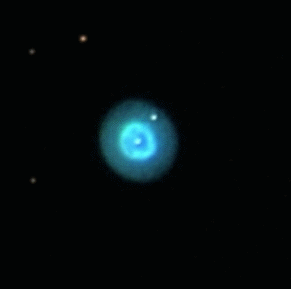Explanation: What do the Owl, the Cat's Eye, the Ghost of Jupiter, and Saturn have in common? They're all planetary nebulae of course(!), glowing gaseous shrouds shed by dying sun-like stars as they run out of nuclear fuel. Beautiful to look at, the symmetric, planet-like shapes of these cosmic clouds, typically 1,000 times the size of our solar system, evoke their popular names. Flipping through digital pictures made by participants in the Kitt Peak National Observatory Visitor Center's Advanced Observing Program, astronomer Adam Block created this delightful animation. Ten different planetary nebula images are presented, each registered on the central star. In order, their catalog designations are NGC 1535, NGC 3242 (Ghost of Jupiter), NGC 6543 (Cat's Eye), NGC 7009 (Saturn Nebula), NGC 2438, NGC 6772, Abell 39, NGC 7139, NGC 6781, and M97 (Owl Nebula). This glorious final phase in the life of a star lasts only about 10,000 years.
1999 2000 2001 2002 2003 2004 2005 2006 2007 2008 2009 2010 2011 2012 2013 2014 2015 2016 2017 2018 2019 2020 2021 2022 2023 2024 2025 |
Январь Февраль Март Апрель Май Июнь Июль Август Сентябрь Октябрь Ноябрь Декабрь |
NASA Web Site Statements, Warnings, and Disclaimers
NASA Official: Jay Norris. Specific rights apply.
A service of: LHEA at NASA / GSFC
& Michigan Tech. U.
|
Публикации с ключевыми словами:
M 97 - NGC 6781 - NGC 7139 - Abell 39 - NGC 6772 - NGC 2438 - NGC 7009 - NGC 6543 - NGC 3242 - NGC 1535 - planetary nebula - Планетарная туманность
Публикации со словами: M 97 - NGC 6781 - NGC 7139 - Abell 39 - NGC 6772 - NGC 2438 - NGC 7009 - NGC 6543 - NGC 3242 - NGC 1535 - planetary nebula - Планетарная туманность | |
См. также:
Все публикации на ту же тему >> | |
